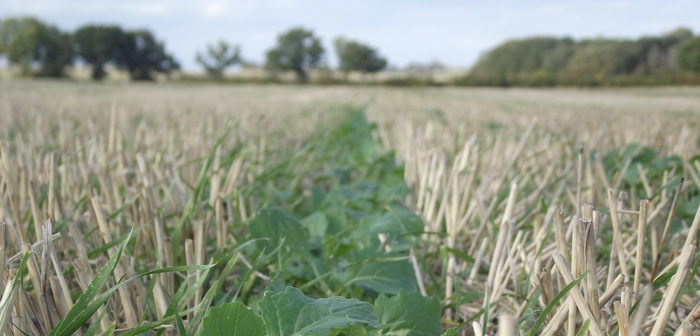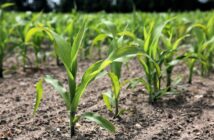One of the key drivers in the decision to drill OSR for rapid and consistent emergence in order to avoid adult CSFB grazing is adequate moisture in the seedbed.
With the recent and forecasted unsettled weather into early August, bringing rainfall to many parts of the country, soils are wetter than they have been for a few seasons, providing the much needed opportunity for oilseed rape establishment.
“Lack of moisture in the seedbed has been a dominant factor affecting establishment in the past two seasons, as where seed was planted into dry and dusty seed beds, germination and subsequent crop emergence was slow and erratic,” says Liam Wilkinson, arable development officer for breeders Limagrain UK.
“Oilseed rape seeds harbour less energy stores than other species, so ensuring plants can establish roots quickly and that those roots then have access to moisture and nutrition is key for strong autumn establishment and vigour.”
“Current favourable soil conditions and an early harvest in some areas, will mean that many growers who have been undecided about growing oilseed rape this autumn, may now be considering putting the crop in.”
“Whilst these current conditions offer an opportunity for the crop to establish – it’s still very early to consider drilling rape. It’s worth remembering the pro’s and con’s of this drilling time as whilst early drilled crops, if well-established, can better withstand attack from adult CSFB, it makes them more vulnerable to larval damage – meaning that drilling early for flea beetle may not be the way to go,” he warns.
Liam refers to a current research project, funded by AHDB, in which Dr Sacha White (Senior research entomologist at ADAS), has analysed 1,100 sites dating back 14 years, looking at the correlations between drilling date and damage from CSFB.
“One clear trend that emerged, was that later drilled sites had markedly less larval damage.
“In recent seasons the most severe damage to OSR crops has been caused by the CSFB larvae rather than the grazing damage by adults. Later drilling means that the crop misses the main influx of adult CSFB during migration; resulting in later egg laying with cooler temperatures, slowing development of eggs and larvae.”
“This results in lower larval numbers in the autumn and in the following spring.”
The correct varietal choice is absolutely fundamental to whichever drilling time, based on the attributes needed for that particular timing, says Liam.
“With later drilling choose varieties that can establish quickly and cope with the risks of drilling later – such as the potentially more damaging effects of phoma on smaller crops and increased risk of winter damage. “
“Plants should aim to have established a sufficiently large biomass to overwinter to aid with overall robustness and increased spring growth, which in turn can help to grow away from spring larval damage. “
High yielding hybrids such as Ambassador, Aurelia and Artemis fit the later drilled position perfectly. They have amongst the highest early vigour scores in Recommended List harvests 2019 and in Limagrain’s own internal trials, he explains.
“As trait loaded varieties, they offer genetic traits such as the RLM7 resistance gene which provides exceptional resistance to phoma (which can be more problematic in later drilled crops), with the added security of resistance to Turnip Yellows Virus and pod shatter resistance to protect against seed losses at harvest.”
However in areas where CSFB is not of as much concern and drilling conditions tend to be wetter such as in the north or west, varieties such as Aurelia, Artemis, Aardvark and Aspire, fit an early drill window perfectly. In the correct conditions these varieties will establish well and not leave too big a canopy to manage over the winter.
Remember when drilling early, to drill when seed bed conditions are right, not by calendar date.
Consider seed rates
One method grower’s have tried to mitigate for CSFB damage, is to drill at higher seed rates. Dr Sacha White (Senior research entomologist at ADAS investigated this and found that higher seed rates produced the same number of larvae per plant as there were in plots drilled at lower seed rates.
This meant that there were higher larval numbers in plots drilled at higher seed rates, potentially causing higher pressure in nearby OSR crops the following year. Also, higher seed rates can lead to overly large canopies that require management to deal with an increased risk of lodging. With vigorous varieties, seed rates should target 25-30 plants/m2 and in the case of less vigorous varieties, aim for 40-45 plants/m2.




